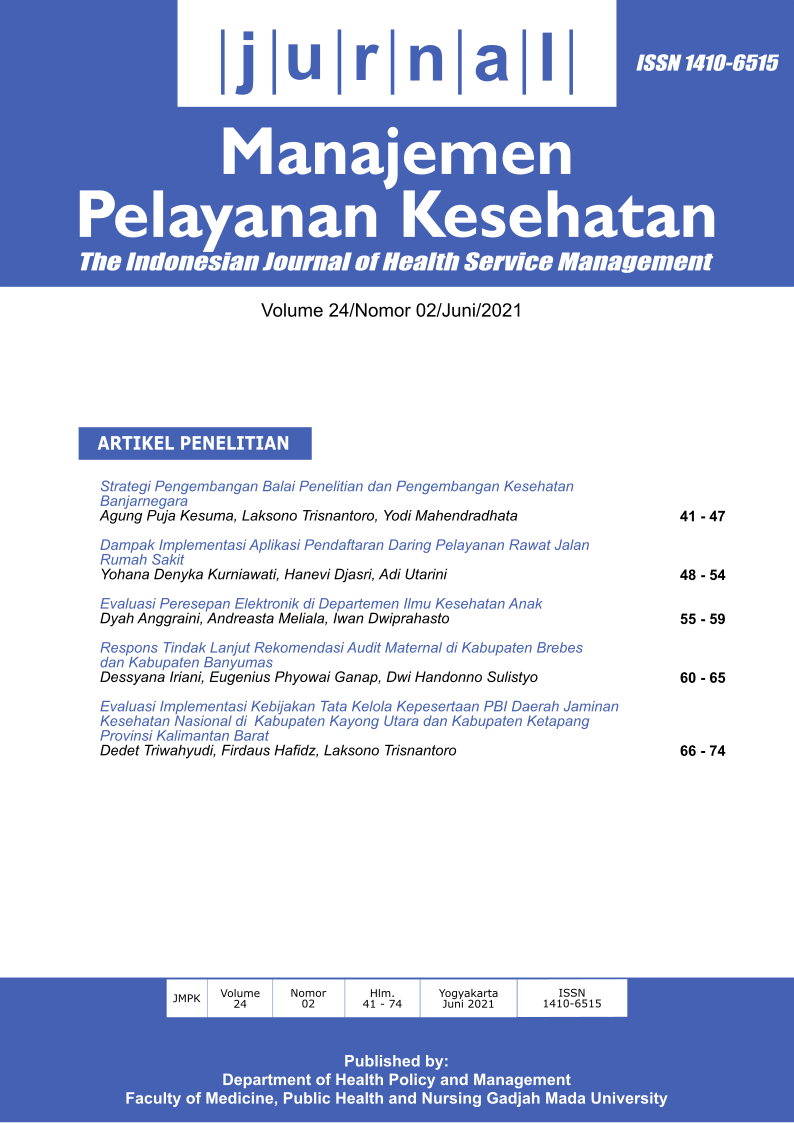DAMPAK IMPLEMENTASI APLIKASI PENDAFTARAN DARING PELAYANAN RAWAT JALAN RUMAH SAKIT
IMPACT OF IMPLEMENTATION OF ONLINE REGISTRATION APPLICATIONS FOR OUTPATIENT IN HOSPITAL
Abstract
Background: Outpatients at the polyclinic of Dr. Oen Solo Baru Hospital complained to the hospital regarding the waiting time from registration to the specialist clinic. Meanwhile, the policy of a tiered referral system also causes an accumulation of patients. Hospitals
have been trying to increase the speed of outpatient services by implementing an online registration application since July 2010. Still, there has never been an evaluation of the implementation of the application.
Objective: To assess the impact of using the online registration application on waiting time for outpatients and to identify the constraints in implementing the online registration application and the possibility of developing this application in the future.
Methods: A mixed-method with explanatory sequential design. A quantitative approach to measure the difference in waiting time of outpatients before and after implementing the online registration application and the patient’s experience of using the application. Qualitative method to explore application implementation constraints and management’s strategy for application development.
Results: There is a difference in outpatient waiting time before and after implementing the online registration application. Before the online registration application, the average waiting time is 1.97 + 0.92 hours. After implementation, 1.49 +1.06 hours for patients who register manually (there is an acceleration of 24.4%) and 1.69 +0.93 hours for patients who use the application (there is an acceleration of 18.8%). Some of the obstacles found were application utilization which was still stagnant, patient problems related to gadgets, and a penalty and blocklist system. The strategy that will be taken by hospital management is to increase the use and development of applications, namely increasing promotions, increasing service ac
cess, developing towards e-payments, and commercial benefits.
Conclusion: The online registration application can significantly reduce the waiting time for outpatients and meet user expectations. However, the number of users is still stagnant, and there are still obstacles that prevent patients from switching to using the application. Efforts need to increase the number of users and develop online registration applications.




